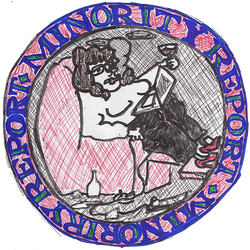“Meet Barbi, your typical suburban housewife”, a hammy voiceover intones in the trailer for Anna Biller’s film Viva (2007). It’s the end of the sexual revolution. Los Angeles, 1972. “She has a loving husband named Rick … a great job … a beautiful home … and everything any woman could possibly hope for. So what is Barbi Smith missing?! Could it be adventure? Could it be glamour?” A pounding drum circle starts up in the background. “Or could it be raw, animal SEX?” Sort of. The film follows Barbi on a quest to “explore her sexuality” as a “liberated woman”, a fresh new idea she’s been reading about in Playboy magazine. Her journey takes her through a nudist colony, a whisky-drenched jacuzzi party and a brief stretch moonlighting as a chiffon negligeeclad sex worker. Bisexuality gets a visit, along with a Mod photographer’s white Formica-filled apartment and finally, a spectacular orgy. But in this world outside the magazine pages, Barbi encounters a throng of lecherous men: ravenous theatre directors, dick-swinging Freudians, artists. Viva is the cuntiest Gesamkunstwerk ever made; Biller wrote the script and the soundtrack, made the costumes and the sets, directed and stars as the titular character. The film is a masterpiece, a classically lit staging of the dialectic between sensual optimism and painfully unerotic disappointment.
The sexual revolution failed. Sex positivity is failing too, argues philosopher Amia Srinivasan in The Right to Sex (2021). Broadly speaking, sex positivity is the twenty-first century doxa that all sexual acts conducted between private individuals are ethically sound when buttressed by the pillars of consent and communication. Srinivasan is a faultless researcher. She deploys sickeningly thick datasets and has read everything (Kant, Dworkin, hooks, r/trufemcels). She is the woke-chic lodestar who made it to the mahogany offices; a recent Vogue UK profile opens with her putting down a martini to accept the Chichele Professorship of Social and Political Theory at Oxford. She also looks radiantly heterosexual in all publicity photos, a novel quality rarely attributable to recent public feminist intellectuals. She’s exciting. Contesting the individualism and market logics of liberalism that underpin sex positivity, The Right to Sex reaches “back to an older feminist tradition that was unafraid to think of sex as a political phenomenon”. It’s an attempt to resurrect the radical promise of sexual liberation for a generation of underfucked, oversexed zoomers and the millennials plugged in enough to identify with them. In the grand tradition of feminist utopianism, Srinivasan asks readers to “[dream] of a freer sex to come”. The book is watertight. It’s also extremely boring and annoying.
This essay is about the shared concerns of Viva and The Right to Sex—how the aesthetics and narratives of sexual fantasy relate to actual fucking, and how these are corralled by forces external to the self (patriarchy, racism, capital, Penthouse). Why do we want what we want? Can we ever have truly raw, animal sex? Srinivasan is trying to restage the panache of the second wave for an audience sick of the endless dredge of Butlerian performativity. But she has produced a weirdly dour pastiche of a canonical feminist book. Conversely, Biller traffics in fetishistic recreation; her homage to what one critic has called the “bottom feeder cottage industry” of sexploitation flicks made in New York and LA in between 1960 and the early 1970s is impeccable. The Right to Sex is attuned to both a pragmatically addressed present and the hallowed concept of radical futurity, but it is Viva’s attention to symmetrical hors d’oeuvres and exuberant pubes that is a more affective vision of emancipatory sexual subjectivity. Viva is the better feminist text. By this, I mean that it’s hornier. And by that, I mean that it is a profoundly moving picture of how desire works. Through this cinematic gift, Biller offers two transcendent hours for imagining forms of desire worth desiring. Lockdown isn’t exactly analogous to life as a bored housewife in Los Angeles in 1972, but there are definitely less proximate realities. In these sick, sad times, locating desire, libidinal energy, horniness, whatever you want to call it, couldn’t be more urgent.
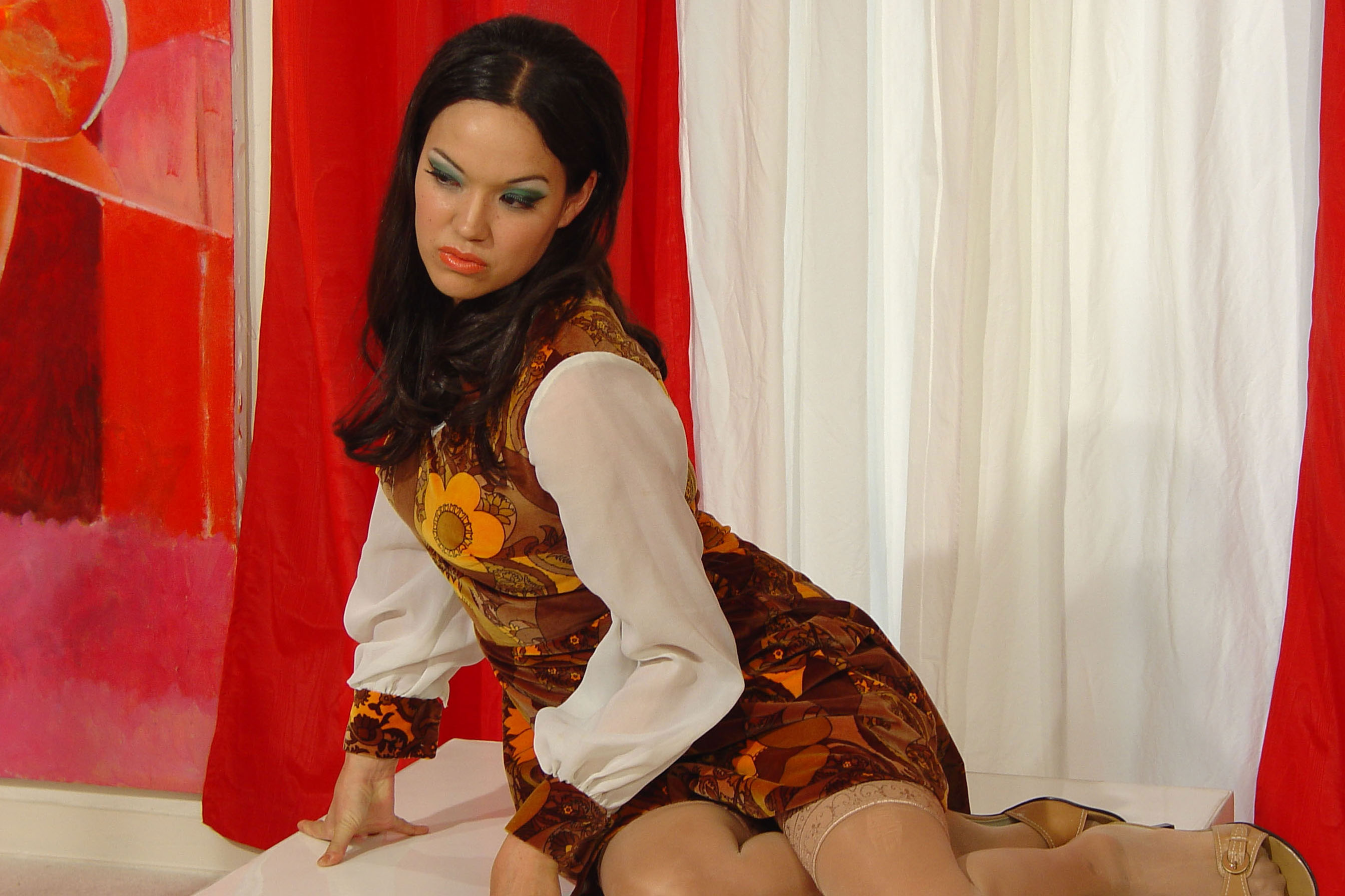
Dark times: the sex recession and state-mandated celibacy
Viva and The Right to Sex appear in an epoch of dire material circumstances, erotically speaking. Recent studies found that young people have been having significantly less sex than previous generations. The art critic Dean Kissick ascribed the sexual dip in the West to post-GFC precarity and the rise of technology: the alienation produced by Hinge, Tinder, Feeld etc. and the general social perversions of constant phone use. The downward sex trend continues in the pandemic years, a period of state-mandated mass celibacy (spiritual, if not exactly physical). Finally, if you weren’t already struggling to nurse a softie to life, there is the pastel-hued bathos of “sex positivity” to contend with.
The key tenets of mainstream sex positivity are best captured in a novelty product sold by the American feminist sex toy company Unbound. The “Magic Babe Ball” is an iridescent sea green plastic sphere that costs $12USD and allows pleasure-seeking users to shake and land on “BDSM” suggestions such as “Whisper Something Saucy”. The website notes that the Unbound staff have “handily printed: ‘Consent matters here. You can always shake again’ around the rim in case you’re not feeling a certain command because, in this house, we play gender-neutral, consent-centered sex games only”. Sure. For the record, there are important gains being made by the girlboss cum industry. But I hold a deep revulsion towards the Magic Babe Ball and all it signifies. It’s partially aesthetic, but also borne of a pragmatic skepticism. Consent, communication, challenging the binary. Tick, tick, tick. What could go wrong here?
In research that will surprise no woman, femme or enby who has been on a date recently, Srinivasan finds that for many of her young students, real life experiences of sex often did not align (sometimes violently so) with the ideology of sex positivity. A “discourse of empowerment and body confidence masked a deeper sense of disappointment and shame”. And because the discourse was so centered on autonomy and empowerment, Srinivasan’s students’ disappointment was near-impossible to articulate. This makes sense. It’s a taboo dynamic endemic to a certain zillenial milieu, hence why the articulation of it has been met with widespread relief (see Nymphet Alumni’s episode on the mass cultural trauma of Tavi Gevinson’s Rookie Mag; Petra Collins should be burnt on a limited edition SSENSE stake). The gush of media attention directed towards The Right to Sex is testament to widespread sexual disillusionment.
Unfortunately, Srinivasan presents a milquetoast analysis of how the failures of sex positivity function in practice and offers no truly juicy alternatives. One of her primary rhetorical devices is deploying stories about her students to illustrate her theoretical positions (think Maria Tumarkin via Oxbridge and a brow bar). But in hewing to the ethical and privacy dictates of contemporary non-fic, Srinivasan’s anecdotes are leached of detail. She recounts:
“After [the] first time I taught a seminar on porn, one of the students visited me in office hours. ‘It helped me understand the sex I’ve been having’, she said. Her ex-boyfriend had always told her she was doing it wrong. ‘I see now he wanted me to be like those women’—the women in porn. She wasn’t like that … so he dumped her.”
What sex has this amorphous student been having? What does she want? It is nearly impossible to summon genuine empathy or identification with the ciphers in The Right to Sex. Srinivasan also never “writes personal essays in the contemporary mode”. This is somewhat of a balm in our epoch of compulsive autofiction. But her reluctance to write meaningfully about others or herself illustrates a double bind: to appropriate or to confess? It’s a false dichotomy (quality always absolves), but there are myriad reasons why people use themselves as subjects. It’s easier to be flippant and ergo funny, for one. If Srinivasan really wanted to whip up some of the energy of her second wave predecessors, she could’ve taken (selective) notes from dusty old Germaine Greer in The Female Eunuch (1970): “At all events a clitoral orgasm with a full cunt is nicer than a clitoral orgasm with an empty one, as far as I can tell at least”. Alternatively, Srinivasan could have watched Viva.
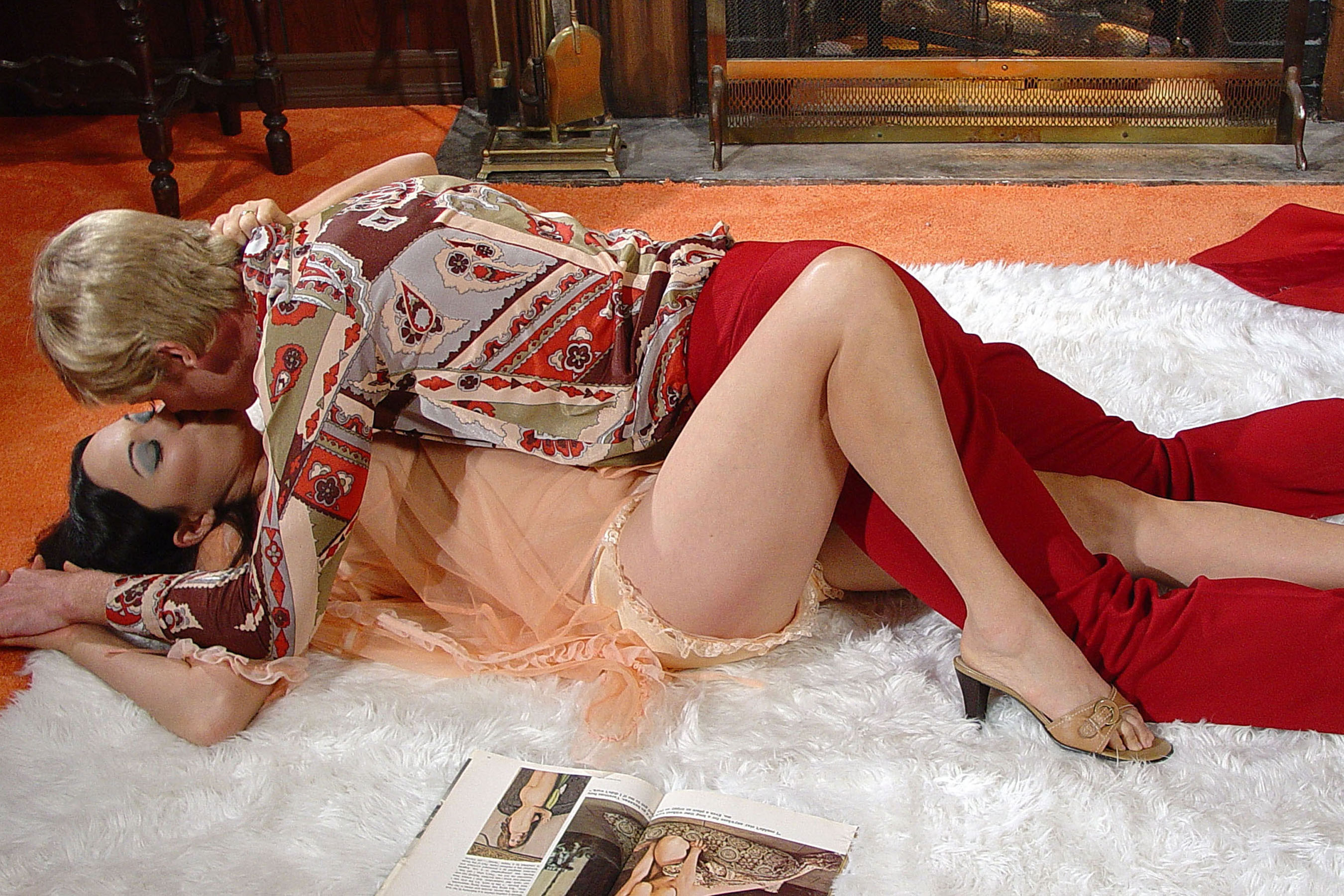
“Are You Honestly Ready for the Sexual Revolution?”
Biller said that she acted in the main role because she didn’t feel comfortable asking another actress to do what was required to make the film work. Her performanceis incredible. She is a mini-skirted vision in teal eyeshadow who perfectly embodies the formation of female fantasies and the deer-in-headlights agony of their flattening. That other uber-glazed feminine auteur-actress, Dasha Nekrasova, could learn a few things. Barbi spends the first third of Viva drinking red wine, smoking cigarettes and looking at soft-core magazines in the bath. What else is a girl supposed to do after she’s done all the morning housework and it’s too early to start cooking for Rick? Sometimes she picks up Playboy (as her neighbour Sheila says, “You’d be surprised … there’s some very artistic photography!”). But her favourite magazine is Viva.
The origin of the film’s title, Viva was an American “International Magazine for Women” that ran from 1973 to 1978. It was Penthouse founder Bob Guccione’s attempt at a sister publication, part of a haphazard plan to corner the “libber” erotica market. Issues are replete with images taken through Vaseline-smeared lenses to accompany articles such as “Women Are Into: Total Feminism, Male Nudes, Pubic Hairstyles, Hash Smuggling, Great New Fall Fashions” (August, 1974), “Vaginal Exercises: Easy, Erotic, Exclusive!” (October, 1974) and the chiding “Are You Honestly Ready for the Sexual Revolution?” (September, 1974). This was a fantasy life being sold: trade mops, roast dinners and monogamy for freedom and free love.
Reject tradition, embrace modernity, as the adage once went. Barbi’s husband Rick, played by “Chad England”, is a perfect summer barbeque of a man. He is a Ken doll completely content playing golf, making love in missionary and relishing a foot massage after a long, hard day in the office; he is the 1950s. Barbi loves him. But she wants something more. When Rick leaves on a business trip, Barbi decides that it’s time to pursue the life she’s been imagining and joins an escort service in the city.1 Her new pseudonym: “Viva, which in Italy means ‘to live’. Because that’s what I want to do now. To live”. To dream of a freer sex, as Srinivasan would say.
But the 70s men Viva encounters in her brave new world couldn’t care less about female pleasure or the “Total Feminism Now” features of her magazines. They sniff out Viva’s naiveté and manipulate or force her into bed. There are three rapes and one attempted rape in Viva. These events, while clearly traumatic, are represented as a matter of fact, unremarkable in the bohemian circles of counter-cultural Los Angeles. “The sexual revolution”, Biller observed recently, “was a scam”. For many women, much of the time, it was a period where men felt an extreme, unprecedented entitlement to all women all of the time. As Viva’s creepy neighbour Mark monologues, breaking the fourth wall: “There has never been a better time to be a man. The willing women. The dandy clothes. The frills. The big rings and jewellery. The open shirts. The sense of entitlement. Take it from me: savour this time, for it will soon be gone, never to return”. The psychedelic organ jazz band goes wild.
Viva’s first client with the escort service is a man named Elmer, the charismatic leader of the Healthy Valley Nudist Retreat. Their encounter exemplifies the how the language of liberation is cynically transfigured to serve ulterior motives. The retreat is all hot tubs, timber and ferns. Throughout Viva, nearly every actor wears a Nadia Lee Cohen-esque synthetic wig; these firmly styled plastic helmets are most striking in this scene, when all other polyester garments are removed. Everyone’s drinking. Everyone’s nude, but all the women wear heeled sandals. One couple play a floppy game of ping pong. Wandering through a crowd of tufty pussies and shrivelled cocks, Viva overhears a man with a nubile young woman on his lap opine that “Marcuse’s foundation is Freud’s principle that our instincts are founded in the pleasure principle of eros, or libidinal energy. Too often, we sublimate this energy to a work impulse” (I swear I read something almost identical in SPLM, but I digress). Viva finds Elmer, who resembles a lean, dopey John C. Reilly, jamming with a bunch of naked troubadours. After he finishes the track, he takes Viva back to his macramé-riddled lounge room, puts his prayer beads and kaftan on and sits down to talk.
The dialogue is straight from the hopeful pages of Viva magazine. It makes the subsequent sexual encounter all the more tragic.
“So, how’d you get hooked up with the agency?” Elmer asks.
“I’ll be honest with you,” says Viva. “I got in a fight with my husband. That’s when I realised that life could be so much more. That I could be having adventures, instead of just staying home and cooking all the time and waiting for him to come home.”
“That’s cool. That’s very cool. The whole husband and wife thing’s a drag, isn’t it? Puts unnecessary constraints on free love.”
A rose by any other name—“ethical non-monogamy”—would smell as patchouli cracked. Elmer promptly beginning to maul Viva. She asks him to slow down. She’s not ready. Immediately, he hangs his head in his hands over the back red velvet couch and starts sulking. Free love doesn’t wait! Viva sighs, stands and walks over to strip in front of a large amateur painting of a man performing passionate cunnilingus. Fade to black. In the next scene, in bed, Elmer hits a pipe.
“I thought I was going to hate myself this morning,” Viva pouts. “But I don’t. I hate you!”
Life could be so much more than Rick and Swedish meatballs. Just not at the Healthy Valley Nudist Retreat.
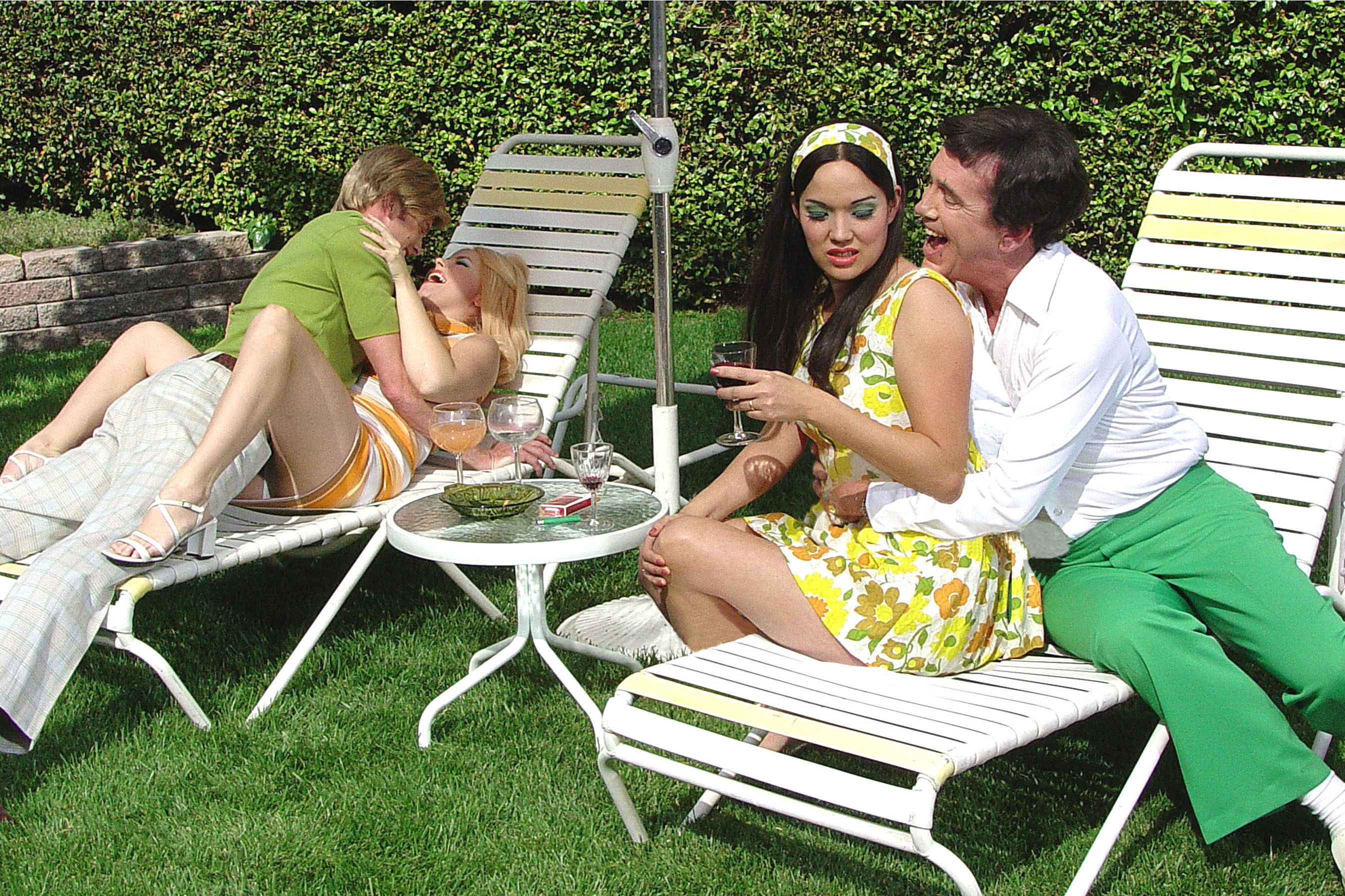
“The first and last fantasy…”
Fantasies falter. Then what? How does a girl resurrect desire in the wake of abject disappointment, whether from a nudist fuckboy or two years of “draconian” public health measures? Watching Viva, I thought often of the feminist writer Andrea Long Chu, Srinivasan’s most potent intellectual adversary. Both write about how twenty-first century feminism has failed to deal with the complexities of sex. Both are interested in the formation of desiring subjects through narrative, aesthetics and radical political projects. Both turn to second wave theorising to understand these relations better. Their pet examples are different: Srinivasan is fixated on incels, a subculture with an entirely outsized grip on the cultural imaginary, while Long Chu has written extensively on the connections between historic lesbian feminism and current trans politics. Yet they both orbit a central idea. Desires are not just, as the sex positive model would have it, something primordial to the individual. That people just want what they want cannot be accepted ipso facto; desire is often more flexible—about want and circumstances, rather than preordained need—than is politically efficacious to admit.
In spite of these zeitgeisty alignments, the pair are deeply at odds. Srinivasan spends pages of The Right to Sex responding to Long Chu. She always employs a tone of courtly millennial debate, but in the spirit of nostalgia you could try to imagine this interaction as a bare-knuckle discursive shit-fight (Buckley vs. Vidal, Paglia vs. Sontag, Schmidt vs Hurst etc.). At length, Srinivasan quotes Long Chu’s response to her 2018 London Review of Books article, also titled “The Right to Sex”:
“Obviously something like ‘no fats, no femmes, no Asians’ is a desire that has a history, and has a politics, that can be described by reference to political processes: imperialism, white supremacy, and also, like, the world-historical defeat of the female sex … [But it’s] really fucking hard to figure out a way to tell people to change their desires that isn’t moralistic.”
Srinavasan rebuts with typically arch proceduralism.
“Is there no difference between ‘telling people to change their desires’ and asking ourselves what we want, why we want it, and what it is we want to want? Must the transformation of desire be a disciplinary project (willfully altering our desires in line with our politics)—or can it be an emancipatory one (setting our desires free from politics)?”
The latter sounds technically appealing. Nobody wants to argue against emancipation. And yes, we can all agree that desire is (partially) formed by forces external to the self, and that these forces are political. The major conflict is how to respond. Srinivasan, although she would probably deny this, ultimately believes it is possible to unpeel fantasy from sexual fact or get beyond fantasy; set desire “free” from politics. But, let alone the charge of moralising, is this even possible?
Back to Viva. There are two genuinely erotic scenes in the film, stolen moments where the optimism of Barbi’s bath time fantasies are resuscitated. The first is her seduction by Agnes, a bisexual “Amazon beauty” in the swingers’ party set. They first make eyes across a steamy jacuzzi.
“Hey beautiful,” Agnes says, before offering a gentle warning to Viva about the pitfalls of her new scene.
“I can take care of myself!” Viva says. Sure, little libber.
“That’s good” Agnes replies. “Because you look like someone who needs taking care of. By someone who knows how.”
She places Viva’s hand on her breast. This foray into what neighbour Mark derides as “filthy lesbianism” is a respite, a queer salve in a hellpit of sideburned molestation. No other lover could slip off Viva’s feather boa with such tenderness.
The second heroic rehabilitation of fantasy appears in the penultimate scene of the film, when Viva performs a musical number at an orgy held at a moated castle in the Hollywood Hills. Imagine Russ Meyer’s Beyond the Valley of the Dolls party—topless chicks, weak-chinned men in silk scarf neckties, couples humping in every corner. Transplant the crowd to vaguely medieval mise-en-scene. It’s a miscellaneous costume theme party. There is a man in a Greco-Roman robe; a woman in a chainmail minidress; a pan-piping satyr in a layer of thin green body paint and golden lycra briefs. Drums start. A group of pseudo-primitive, leopard-print loinclothed dancers jump onto a central stage, surrounding Viva. She wears a golden bikini and a huge, half-spherical golden headdress, like the ritual garment of a pagan goddess who’s been through the Spotlight sequin isle or the gilded halo of Renaissance Madonna. The first time I saw this, I shed a tear at Biller’s transcendent vision. Rather than withdrawing or forcibly reshaping her desires away from an oppressive set of political circumstances, Viva recognises the futility of her situation. She finds a perverse form of liberation through embodying a maxed-out version of the meagre fantasy apparatus available. Everyone at the orgy stops to watch her siren song.
Far away there is a drum!
I can hear it go thrum thrum thrum!
It echoes the beating of my heart!
I want to dance until the deep, deep throbbing starts!
Oh, my heart aches,
Oh, I want you to take me now!
While the evening is ripe and full and heavy like a luscious fruit!
Viva extends her arms, winds her outstretched hands in circles, pouts.
Do with me what you will, Do it all!
I can’t stop myself from throbbing,
Like a tender shoot,
Like a rosebud unfolding,
Like a Venus fly-trap of love,
Holding you, also throbbing, in my thrall!
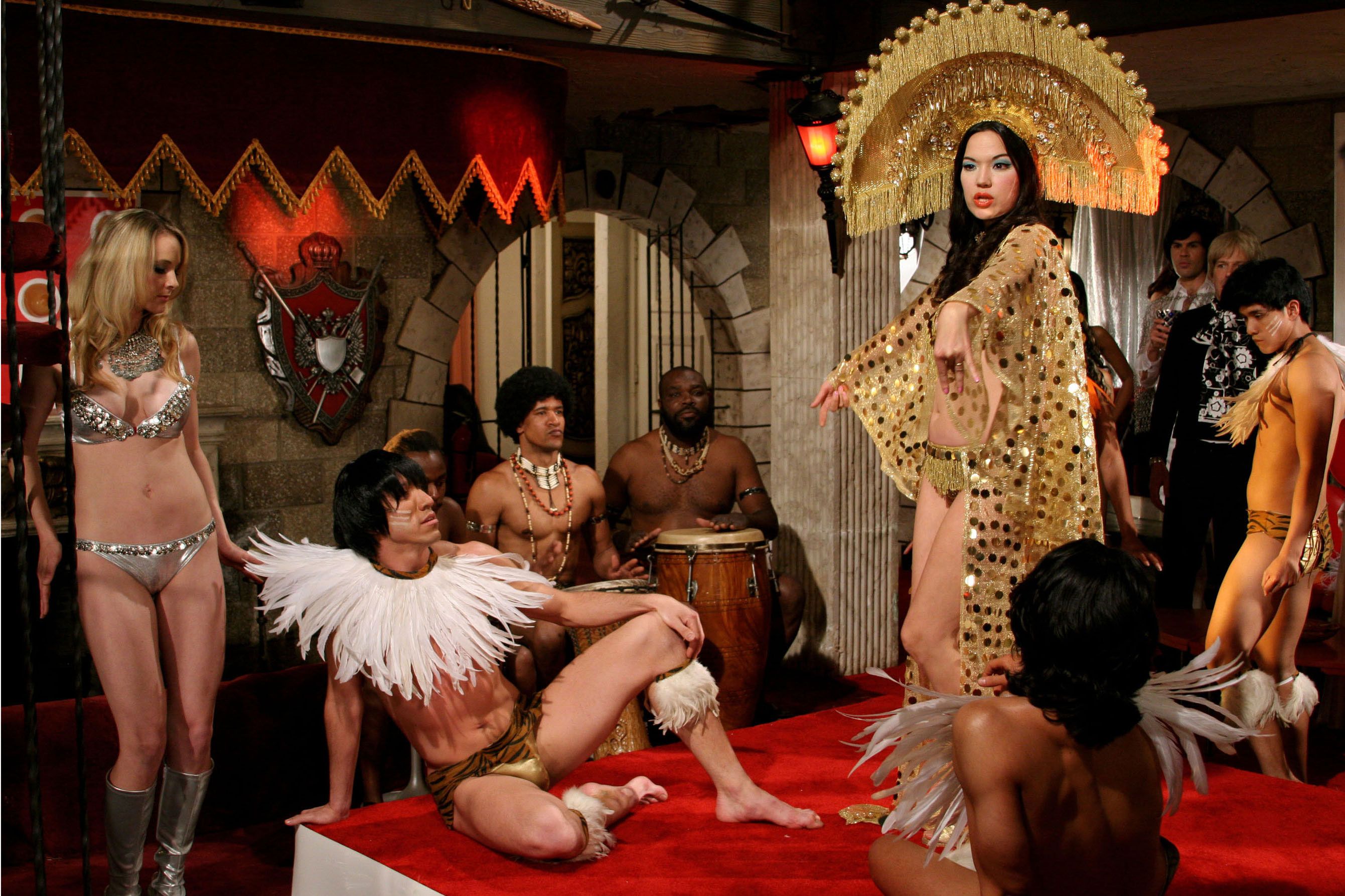
This performance captures the shifting structures of desire far more compellingly than anything in The Right to Sex. There is an erotic irony to the contrast between the passive self-abnegation of the lyrics—“do with me what you will, do it all”—and the power of Viva’s presence. Barbi the housewife and her desires have been transformed, from suburban ingénue to self-aware showgirl. Srinivasan knows that complete sexual emancipation is probably unattainable—she writes “freer” more often than “free”—but I think she holds out too much hope. It is an error to think that desires or fantasies can ever be set totally free from external forces. Transformation, rather than emancipation, is more realistic. Long Chu says it best:
“[T]he question is never how to get rid of fantasy; the first and last fantasy, after all, is that fantasy is something you can do without. The question is how to make adjustments in fantasies without totally breaking them, or how to survive a shift from one fantasy to another, or sometimes, just how to survive the fantasy you’re already in.”
Another way of putting this: horniness always adapts. Or, as Lacan once said, the desiring subject is always going to be constituted by lack, now put your headdress on and dance for me, baby.
Viva la revolution
As a sign of good faith to finish, I’ll acknowledge that Srinivasan has some good ideas. In particular, she reiterates that liberal feminist political demands often have unintended material effects; they are absorbed by capital to produce even more exploitation, even more alienated and atomised working conditions. The classic example of this is the entrance of middle-class feminists in the West to the labour market from the 1970s onwards, precipitating the shift where a single-wage household became the exception rather than the suburban norm. In Viva, the most astonishingly dated thing isn’t the rampant sexual abuse or the golden lycra orgies. It’s the pools. Or, rather, the hours and hours that the characters spend frolicking in them. The sheer abundance of their leisure time. Barbi experiments with free love for weeks on end because she doesn’t have to work. Regarding sex positivity, who cares if your partner will validate your queer identity if you can’t get time off to fuck? Viva is anti-precarity porn. It’s enough to make a girl update the credit card details for her bounced union membership.
My official business here is criticism. But unofficially, I’ve been searching for libidinal energy, inspiration to take me out of the depths of the longest lockdown in the world and into a summer of collective exhilaration. We have been living through dark, dark times, man. But hey, the times they are a-changin’. Viva is supposed to be about the misery the sexual revolution produced for the ordinary women who lived through it, but I have to admit that I’ve been using it as a fantasy blueprint for how to live well. Jacuzzis, robes, romance, a continuous stream of spirits. Heavy lidded blinking (very erotic). Orgies. Dionysian excess in miniskirts. Leisure; pleasure. Viva! Sorry Srinivasan, but rights, politics, justice … it’s been a very difficult winter. We can do total liberation later. For now, just put your fingers in my mouth. Pour me another drink. Please. Viva: “which in Italy means ‘to live.’ Because that’s what I want to do now”. No revolutions, no positivity, just fantasy, ecstasy and a summer of love. Viva!
-
This was a popular fantasy of 60s and 70s sexploitation flicks: see Joseph Mawra’s 1964 and 1965 Olga trilogy, about a perverted bisexual madam: “This Movie Shows What Freud Only Hinted At!” ↩
Cover image: Still from Viva, directed by Anna Biller (US, 2007).
